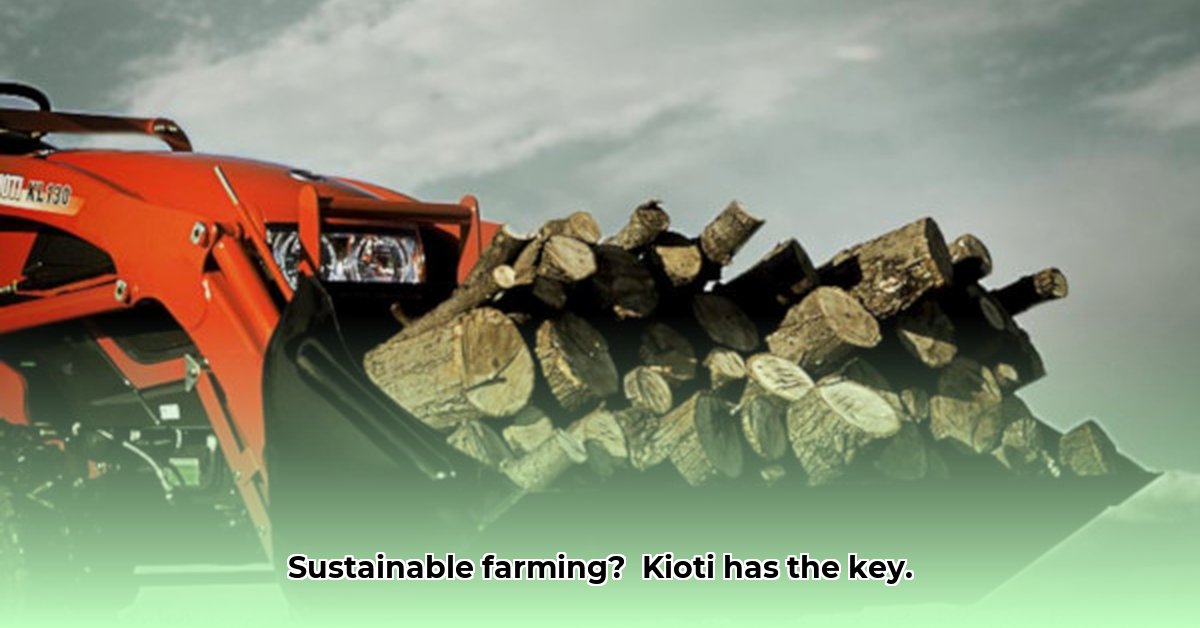
Kioti Tractor Attachments: A Sustainable Farming Revolution
Farming today demands more than just productivity; it requires environmental responsibility. Kioti tractors, already known for their reliability, become even more valuable when paired with the right accessories. These attachments, ranging from front-end loader to specialized harvesting tools, significantly impact a farm's efficiency and sustainability. But are current Kioti attachments meeting the growing demand for eco-friendly practices? This article explores the current landscape, the challenges and opportunities for sustainable solutions, and actionable steps for a greener future. Ultimately, we aim to empower farmers, manufacturers, and policymakers to make informed decisions that benefit both harvest yields and the planet. For more information on Kioti attachments, visit this helpful resource.
The Current Landscape of Kioti Tractor Attachments
The market offers an array of Kioti tractor accessories for diverse farming tasks. These attachments, categorized by function (soil management, planting, harvesting, etc.), currently rely heavily on traditional materials like steel and fossil fuel-powered engines. While effective, their environmental impact – from manufacturing to disposal – is considerable. This raises a critical question: How can we maximize the efficiency of Kioti attachments while significantly reducing their environmental footprint? This is where innovation and sustainable practices become paramount.
Sustainability: Challenges and Opportunities
Modern agriculture faces significant environmental challenges. Traditional Kioti attachments, often made from steel and powered by fossil fuels, contribute to greenhouse gas emissions and resource depletion. Consider the entire lifecycle: material extraction, manufacturing, transportation, use, and disposal. Each step leaves an environmental "fingerprint." However, the scenario isn't bleak. The agricultural sector is witnessing a promising shift towards more sustainable practices.
The transition to recycled steel and bio-based plastics is underway, marking a fundamental shift. This isn't simply a trend; it's a critical step towards long-term sustainability. Furthermore, the development of electric-powered attachments promises quieter, cleaner farming operations, reducing our reliance on fossil fuels. "The potential for reducing both carbon emissions and operating costs through the adoption of electric attachments is substantial," says Dr. Anya Sharma, Agricultural Engineering Professor at the University of California, Davis.
Actionable Steps for a Greener Future
Transforming agriculture requires collaboration. Below are actionable steps for various stakeholders:
For Kioti and Tractor Manufacturers:
- Invest in R&D: Prioritize research and development of eco-friendly designs and materials for future Kioti tractor accessories. Target a 25% reduction in carbon emissions from manufacturing by 2030.
- Sustainable Partnerships: Collaborate with suppliers dedicated to sustainable sourcing and manufacturing processes. Aim for 100% ethically sourced materials by 2025.
- Precision Agriculture Integration: Integrate precision agriculture technologies into attachments to optimize efficiency and reduce resource consumption. Explore achieving a 15% increase in field efficiency through precision farming integration.
For Attachment Manufacturers:
- Transparency: Provide farmers with detailed information about material sourcing and lifecycles. A complete life cycle assessment (LCA) should be readily available for all products.
- Sustainable Materials: Prioritize and utilize biodegradable or easily recyclable materials in designs. Target a 50% increase in the use of recycled or bio-based materials by 2028.
- Industry Collaboration: Work collaboratively to establish industry-wide sustainability standards and best practices.
For Farmers:
- Environmental Impact Assessment: Conduct regular assessments to determine the environmental impact of your current attachments.
- Prioritize Low-Impact Options: Prioritize attachments with a demonstrably lower environmental footprint.
- Embrace Precision Agriculture: Implement precision agriculture technologies to maximize efficiency and minimize resource waste.
For Governments and NGOs:
- Incentivize Sustainability: Offer financial incentives to farmers who adopt sustainable agricultural technologies and equipment.
- Fund Research: Direct funds towards research into eco-friendly attachment designs and manufacturing processes.
- Sustainable Regulations: Develop and enforce regulations promoting sustainable manufacturing, use, and disposal of agricultural machinery and attachments.
The Future of Sustainable Agriculture: A Collaborative Effort
The future of farming hinges on sustainability. Stricter regulations concerning emissions and material usage are anticipated, further driving innovation towards eco-friendly Kioti tractor accessories. This transition involves more than simply upgrading equipment; it demands a transformation of the entire agricultural ecosystem. This transformation requires the collective commitment and collaboration of farmers, manufacturers, policymakers, and NGOs. Only through this unified approach can we create a sustainable and prosperous future for agriculture.
Risk Assessment Matrix: Kioti Tractor Accessories
A preliminary risk assessment is provided below. Ongoing research is crucial to refine these assessments.
| Technology/Practice | Environmental Risk | Economic Risk | Mitigation Strategies |
|---|---|---|---|
| Traditional Steel Attachments | Moderate | Low | Transition to recycled steel; optimize designs for longer lifespan and durability. |
| Fossil Fuel-Dependent Attachments | High | Moderate | Transition to electric or alternative fuel systems; focus on improved fuel efficiency. |
| Improper Attachment Use | High | High | Comprehensive training programs for proper usage; integration of precision agriculture technologies. |
| Lack of Recycling Infrastructure | High | Moderate | Investment in enhanced recycling infrastructure; design for easy disassembly and recycling. |
This risk assessment is not exhaustive. Continuous evaluation and research are needed for comprehensive risk management. By actively managing these risks, we can move toward a more sustainable and resilient agricultural sector.